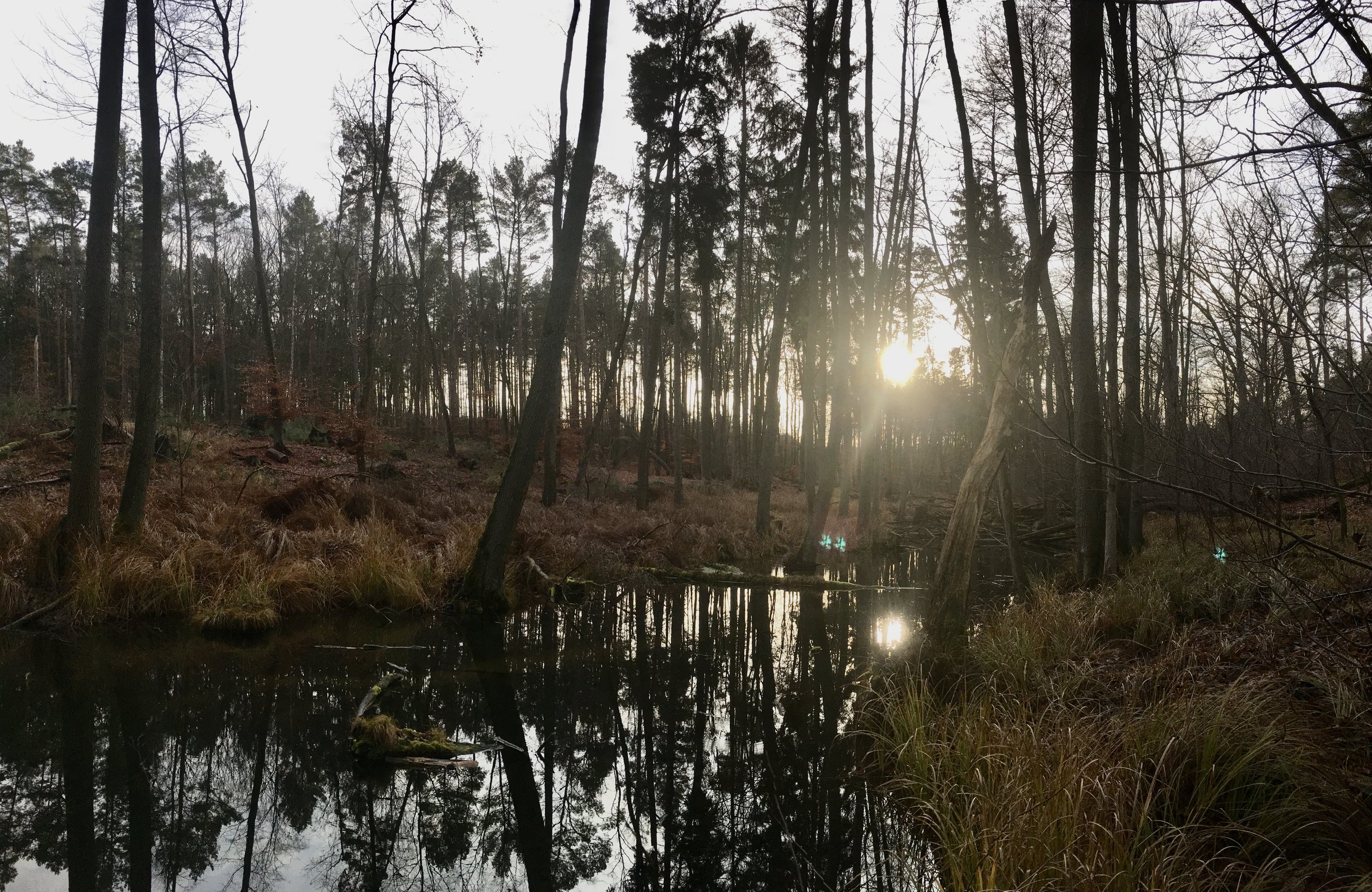
a short treatise on the queerness of the swamp
“the sublime is not possible without slime”
Around 3.5 billion years ago, life on Earth began in a swampy soup of possibility. From sloppy wet beginnings as microbial slime, we evolved, squirming and slithering our way out of the muck, moving further into fields and forests...and eventually bubbling up into a different soup, human civilization. But perhaps there’s always been some kind of primal memory of our swampy origins lingering deep within the collective unconscious, calling us back to the haven of cool dark mud and tangled plants, buzzing and gurgling and squelching with the rhythms of life.
Swamps have long been considered sacred portals to the Otherworld, strange boundary places offering passage between realms of life and death. Ancient peoples once made ritual sacrifices at these sites to appease fearsome chthonic deities — not the sanitised earth goddess archetypes of classical interpretation, but embodying the creative and destructive chaos that flows through the universe — violent primal forces capable of devouring life just as easily as bringing it forth.
Rather than honouring our emergence from mud and chaos, Western Christo-Patriarchy and subsequent Enlightenment ideologies sought to distance humanity from its moist and feral origins, and to enact god-like order and control over nature. However, the confounding wilderness of wetland environments continually served as a stark reminder of human vulnerability and the limits of man’s dominion over the earth. Frightening, impassable geographies for invading armies and colonising forces, places of refuge and resistance for persecuted and fugitive classes, barriers to capitalist extraction and frontierism; in all ways, swamps were obstacles to conquest and counterproductive to projects of civilisation.
Thus, swamps increasingly came to be depicted as evil and melancholic places — disease-ridden, haunted wastelands inhabited by criminal and otherwise degenerate classes. Characterised as hell on earth, their destruction became a divine mission; they must be drained, filled, or otherwise erased in the name of God and modern progress.
In the Western cultural and political imaginary, the swamp has a longstanding association with otherness - feminised, racialised, queer, mad, feral - undefinable and uncontrollable, therefore dangerous. Swamps have historically been used by invaded peoples to thwart their invaders, and thus the moral symbolism of the swamp has repeatedly been enacted by imperial powers to cast the peoples they wish to conquer as swamp creatures - rats, insects, and all manner of contaminating/contaminated subhuman Things. For example, Nazis figured other races in pejorative wetland terms, and in recent years the phrase “drain the swamp” has become a popular slogan of rightwing American politicians. Throughout the centuries witches, slum dwellers, sexual deviants, religious and ethnic minorities, and many other inhabitants of social and political margins have been affiliated with the swamp, and countless modern developments have used morally-coded rhetoric to justify the destruction of wetland geographies and dispossession of both human and non-human swamp inhabitants.
Having strong psychological connotations with gender, sexuality, and death, the swamp is symbolic of the repressed unconscious — all that is monstrous and unintelligible, lying just beneath the surface of the rational mind. The repressed always threatens to bubble up from below, to confound and disorient the senses, to subvert systems of power, order, and classification. Dark, ambiguous, and unknowably deep; provoking anxieties about disease, foreign invasion, and unruly contaminating otherness; simultaneously arousing and disgusting, oozing with both rot and fecundity, the swamp is emblematic of all that which is taboo and abject — a reminder of the murky and porous boundaries between things, and of the dank muck of existence in which we are all mired.
The swamp offers a site of power and resistance for those of us already at home in liminality, ambiguity, and darkness, who by force, fugitivity, or choice have often found ourselves dwelling in marginal spaces that no one wants and many fear, and making kin with the others we find there. To subsume oneself in the moss and mud of the swamp is to reject social order and cultivate a relationship with chaos. It is an invitation to commune with the deviant and monstrous — to become other- than-human, “a thing among things”. By choosing to dwell together in filth and slime, we reclaim our sacred wet holes from cis-heteronormative shame, penetration, and erasure. Down in the swamp, we kiss frogs not to turn them into princes (no more cis men in power), but to celebrate queer community and transform ourselves into fearsome wild creatures that will devour and decompose the patriarchy.
Here in the swamp, we know the sublime is not possible without slime.
Despite centuries of vilification and destruction, swamps survive as some of the last vital wilderness places on Earth. Long cast as useless wastelands, they in fact store more carbon than forests and thus play a crucial role in mitigating the impacts of climate change. Generating abundance through perpetual cycles of decay and rebirth, they offer sanctuary for diversity to flourish. A queer view of ecological history reveals the entanglement of othered environments with othered peoples, offering lessons for survival through continued resistance to the violence of normative ideologies.
As hybrid, peripheral places that sustain many different bodies, human and nonhuman, swamps reveal the tenacity of lifeforms often considered strange, dirty, and dangerous. They exemplify a kind of queer resilience, the persistence to survive and to even thrive in spite of repression and marginalisation. Unruly edge zones that nurture complex entanglements and feral otherness, swamps evoke strange kinds of fluidity, interrelationality, and interpenetrability, opening slippery passageways between realms. Countering and subverting hegemonies of sanitisation, purity, and control, the swamp gushes and squelches with radical queer possibility.



